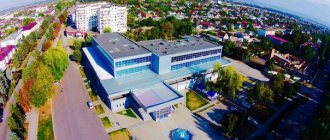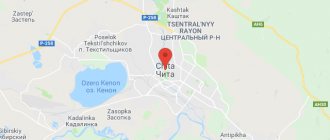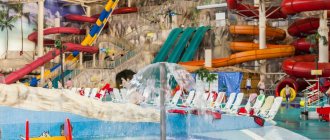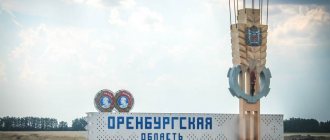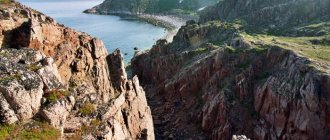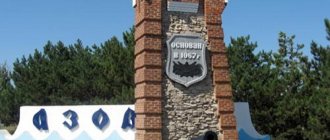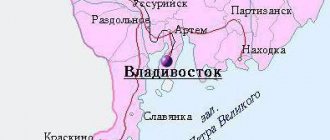Tributaries
The largest tributaries are the Ucha (42) and Polya (92). However, there are several other less significant ones:
- Thieving;
- Sherna;
- Kirzhach;
- Peksha;
- Koloksha;
- Nerl;
- Sudogda;
- Suvoroshch;
- Take away;
- Teza;
- Luh.
Significant cities grew on many of these branches back in the Middle Ages. And already in the last century, even one regional center appeared - Ivanovo (located on the Uvod River). Of course, these are not the smallest rivers. Many resemble streams. There are 40 Klyazema sleeves in total.
The Uvod River and its Shuisky tract to the Tinsky transport
The Uvod River is one of the notable tributaries of the Klyazma. I chose a place for my current that was absolutely flat - no slides, no hillocks. Moreover, it spreads across the plain with oxbow branches. Very leisurely. And along the left bank of the Uvod River ran the historical Shuisky tract. There is an opinion that the name of the river Uvod comes from the word “suvod” - whirlpool, others believe that it comes from “by the water”. The river is interesting, we decided to take a look at it.
To begin with, we moved to the left bank of the Klyazma, the Uvod flows in from that side. Over the bridge in Kovrov, through which the modern version of the Shuya tract passes - the Ivanovo-Shuya-Kovrov road. Because of this bridge, the road now goes differently than before. And the previously known Tinsky transport on the Klyazma remained only in stories.
From Zarechnaya Slobodka to “straightening the Uvod River”
View of Klyazma from Zarechnaya Slobodka
For centuries, Zarechnaya Slobodka stood on the opposite bank of the Klyazma from Kovrov. To this day it has retained its rural charm. A green one-story street overlooking the mirror of a calm, wide river. And with cozy gazebos by the water. And on the other side, in the “old town” of Kovrov, the old red brick buildings of the Treumov-Abelman Factory were already looming. They looked textured, as if demanding that some kind of art space be opened in them. The red brick buildings from the 19th century are worth a visit.
Treumov-Abelman Factory
We pass by oak groves. Obviously young and, judging by the rows of trees, man-made. I remembered how they were looking for oak groves around the princely city of Starodub. Much lower downstream of the Klyazma.
Young oak grove
And then we reached the “false” mouth of the Uvodi. Here part of the waters of the Uvodi River flows into the Klyazma. The mouth is not a real one, a canal that unites two rivers. They say it was dug in the 50s of the 20th century by the local state farm “Giant” for the purpose of land reclamation. Local experts once even rafted along this canal in a rubber boat. The channel is wide, straight, deep, why not? We walk along the coast, periodically crossing ditches dug to drain the fields. There is no water in them, so they cannot serve as an obstacle.
Straightening the Uvod River
So we reached the dam at the beginning of the canal. Or, as it is indicated on some maps, “the straightening of the Uvod River.”
Uvod in the city of Ivanovo, ducks and landmark
A little further on, nothing prevented us from seeing the Uvod River itself. Here, near the mouth, it is at its maximum width, more than ten meters. Water flow is almost two dozen cubic meters per second. The Uvod flows smoothly, very leisurely across the plain, entering the Vladimir region. The channel is very winding, with many oxbow lakes. The canal along which we walked was as straight as an arrow compared to the riverbed.
Actually, the Uvod River. Ten kilometers to the mouth
I had a chance to see the Uvod much higher upstream - in the city of Ivanovo. This, by the way, is the main river of this regional center. They say that during the old textile factories of the 19th century, Uvod within the city of Ivanovo was dirty and smelly. But those factories either closed or mastered more modern technology, and now under the Theater Bridge Uvod pleases with flocks of ducks. People come to feed them - a local city attraction. Above the city on the river there is the Uvodsky reservoir, reaching one and a half kilometers wide and 37 kilometers long. After Ivanovo-Voznesensk (as it was previously called), the river flows through the city of Kokhma.
Ducks on the Uvod River in Ivanovo
The total length of the Uvod River reaches 185 kilometers. It originates in the Andreevsky swamps near the regional center of Komsomolsk in the north-west of the Ivanovo region.
The Shuya tract ran along the right bank of the Uvod River through Shuya to Klyazma. Considering the direction of the road to the city of Kovrov, one of the main streets of Shuya was even called Kovrovskaya for a long time. Near the city of Ivanovo, the Shuisky tract connected with Arakcheevsky and there are even clearings - the remains of that famous road. Arakcheevsky tract, therefore the shortest route from St. Petersburg to Siberia and convicts were driven along it.
The Shuisky tract is beyond the Uvodya, and the fishermen are at the dam
Not far from the beginning of the canal dug by the “Giant” there was the old village of Bolshie Vsegodichi. The Shuisky tract passed behind it. From the dam, where the “straightening” began, the Assumption Church with its magnificent hipped bell tower was clearly visible in that village. It dominated the horizon of the surrounding plain, rising between the trees along the banks of the Uvod River. Someday we'll take a closer look at it.
Place in front of the dam where fishermen gather
In front of the dam there is a crowd of fishermen with fishing rods. I thought, this is a fishing place, we should somehow end up here ourselves with a fishing rod. Moreover, in Kovrov public pages, fishermen speak only positively about Uvodi. Yes, the whole “straightening” duct is chosen by them. By Saturday evening, the roofs of parked cars can be seen here and there among the bushes. People used local roads to get to Uvod for fishing.
Canal from the Uvod River to Klyazma
Fishermen also approached the spot from which they admired the mirror of the channel. Having wished them perches with “those eyes” and everything else of the appropriate size, we set off.
The real mouth of the Uvodi and the disappeared Tinsky transport
The Shuisky tract faithfully reached along the bank of the Uvodi River to the Klyazma River. He crossed the Klyazma at a place known as the Tinsky Perevoz. And then it continued on the other - the right bank of this large river.
We are looking for a continuation of the Shuisky tract
We walked conscientiously along the right bank of the Klyazma, trying to find the continuation of the Shuya tract. We went to the Tinsky transportation through our beloved Shirina Gora. Old roads passed here too. In ancient times, the robber Shirin hunted there, after whom the mountain was named.
We could not determine the clearing where exactly the Shuisky tract passed on the right bank of the Klyazma. Too much has changed here over the past decades. Among the clearings maintained by forestry departments or for communication lines, you can get confused. I think if an expert in local history had been with us, he would have found the continuation of the road unmistakably.
An expert would tell me if the old road passed here
But there is an exact landmark - the Tinsky transport itself. We observe the mouth of the Uvodi on the other side. You can see how narrow the Klyazma is; the weight categories of these rivers are incomparable. Moreover, some of its waters flow into the Klyazma earlier. Through the same canal “straightening the Uvodi River”, going straight to Kovrov.
The real mouth. The Uvod flows into the Klyazma
Why Tinsky transport through Klyazma Tinsky and here
A little lower from the present mouth of the Uvod River near the present village of Glebovo, on the Kovrov-Mstera road there once was a Tinsky transport. Crossing on the path of the historical Shuisky tract.
There used to be a Tinsky transport here
Why did the transportation end up here? The road kept to the left bank of the Uvodi, so as not to establish a crossing over this river as well. When the two rivers connected, the road finally ran into Klyazma, which was impossible to bypass. We had to cross this water barrier.
Klyazma near Tinsky transportation
There was no bridge here. Transportation by ferry existed back in the 60s of the 20th century. The writer Vladimir Soloukhin managed to use it and mentioned it in his book “Vladimir Country Roads”.
The end of the Tinsky transportation was the construction of a road bridge across the Klyazma near Kovrov. The current successor to the Shuisky tract, the Ivanovo-Kovrov road, made a detour to the bridge. Where the sharp turn “happened,” the clearing still continues straight ahead and there is a dirt road leading to the river. It approaches the left bank, where there was once a transport and ends in nothing. On the right bank of the Klyazma, practically nothing reminds of transportation. Only a couple of places convenient for mooring boats.
There is an opinion that the village of Tina was here - algae. But it burned down along with nearby Starodub during hard times and left only the name of the transport. And now there is no crossing.
After a semi-successful search for the Shuisky tract
We sat on the left bank of the Klyazma, opposite the Transfiguration Cathedral and admired the panorama of Kovrov. Its buildings and temples were reflected in the mirror of the water. We enjoyed the silence interrupted by the ringing of bells.
Spaso-Preobrazhensky Cathedral on the other side
The warm setting sun warmed my back. Beauty and peace. Here on the Klyazma between the Nerekhta and Uvod rivers 242 years ago Kovrov received the status of a city.
Oleg Vinokurov,
photo: Dmitry Vinokurov
Bridges over Klyazma
A description of the Klyazma River would be incomplete without indicating the engineering structures intended to cross it. There are 20 of them in total (including the mentioned pedestrian one). Large overpasses (crossings that sometimes combine automobile, pedestrian and railway lines):
- Sheremetyevskoye Highway Bridge;
- Sheremetyevo overpass for the airport;
- crossing of the International Highway;
- Klushinsky;
- Maydarovsky;
- Crossing Dmitrovskoye Highway;
- Vyaznikovsky;
- Gorokhovetsky.
Ecology, flora and fauna
On all sections, the river bed lies in the forest zone of the temperate climate zone, however, it has been greatly transformed by man (the banks are built up with residential buildings, factories, etc.).
There are also untouched pieces of the landscape left. Some are under the care of the state (especially in the Meshchera Lowland). Birch, pine, spruce, gray and black alder, aspen, willow, maple and linden grow. Lots of wetlands. The designated areas are characterized by the distribution of flora and fauna typical of the Central Federal District.
And one last fact. Klyazma was mentioned in the works of more than a dozen classics of Russian literature. In connection with the description of the idyllic landscapes spreading along its banks.
Ivanovo
Video: Ivanovo
Basic moments
The first mention of Ivanovo dates back to the 16th century. The founding date of Ivanovo is 1871 - it was in this year that the village of Ivanovo and Voznesensky Posad united. Unfortunately, the city has practically no surviving buildings dating back to the 16th century, but you should come to Ivanovo to admire the architecture of the late 19th-20th centuries. In particular, buildings dating back to the era of constructivism of the 20-30s are interesting. XX century, as well as mansions built in the Art Nouveau style.
Ivanovo today is part of the Golden Ring of Russia. From a tourist point of view, the city of Ivanovo is interesting for its attractions, such as the Shudrovskaya tent, the house-ship built in 1930, and the horseshoe house built in 1934. Interestingly, there is a circus in Ivanovo, a visit to which can also become one of the memorable events in Ivanovo.
There are approximately 27 hotels of various categories in Ivanovo, almost all of them are concentrated in the city center. Tourists in Ivanovo also have excellent restaurants and bars in the city.
Climate
The climate of Ivanovo belongs to the temperate continental type. As a rule, the coolest weather in Ivanovo occurs in January, at which time the air temperature in Ivanovo drops to -12 °C. It is warmest in Ivanovo in July, at which time the air warms up to +18.7 °C.
Attractions
Sights of Ivanovo include various architectural monuments, museums and other interesting objects.
In particular, such sights of Ivanovo as the Shchudrovskaya Tent - the oldest brick building in the city, the Ship House, designed by architect Friedman, and the buildings of the Ivanovo-Voznesensk Polytechnic Institute are interesting.
The religious attractions of Ivanovo include the Holy Vvedensky Convent, the Transfiguration Cathedral, the Church of the Holy Apostle, etc.
Also interesting are such sights of Ivanovo as the Burylinskaya library, which houses a rare and rich collection of all kinds of books, the house-museum of the artist Morozov, as well as the house-museum of the Bubnov family with a beautiful mezzanine.
We also recommend that tourists visit the Burylin Museum of Industry and Art.
Excursions
First of all, we recommend that tourists go on a sightseeing tour of Ivanovo, during which you can see the main attractions of Ivanovo - the Shchudrovsky tent, the Holy Vvedensky Monastery, the Duringer estate, etc.
Also interesting is an excursion from Ivanovo to Palekh and Shuya, during which you can touch the magical world of Russian art.
Story
The first mention of Ivanovo dates back to 1561: according to legend, Ivan the Terrible granted the village of Ivanovo and its adjacent villages to the Temryukovich-Cherkassky princes. At the beginning of the 17th century, Ivanovo was devastated by Polish-Lithuanian invaders. After this, it is reborn as a large commercial and industrial village.
In the 17th century, textile manufactories appeared here, and the village became the center of the linen industry.
In the first half of the 18th century, Ivanovo became a large fishing and trading village.
In 1705, by decree of Peter I, a customs hut was established here to collect various duties on trade to the treasury.
In the 18th century, cotton and calico printing production emerged in Ivanovo. The oldest civil stone building in Ivanovo dates back to the same century, which originally served as a hut and then came into the possession of the merchant Osip Shchudrov.
Since the end of the 18th century, on the southeastern outskirts of the village there was the Assumption Cemetery, where in 1815 a wooden church was moved from the former Intercession Monastery. In 1834, a new stone Assumption Cemetery Church with chapels of the Nativity of John the Baptist and Barbara the Great Martyr was built. Some of the icons were transferred from the wooden church.
In 1901, the Vvedenskaya Church was founded, which 90 years later became the Holy Vvedensky Convent.
Accommodation
Ivanovo hotels are presented on this page in the form of an objective rating based on reviews from tourists. So where to stay while on vacation in Ivanovo? You can easily find the answer here: all Ivanovo hotels are located below under the resort map in a table format convenient for tourists, which can be sorted by hotel name, by their star rating, by popularity (number of reviews), as well as by the average rating of tourists. in the reviews they leave. The description of each Ivanovo hotel contains its photographs in large format, a list of services available to hotel guests, hotel contact information, a map of Ivanovo with the hotel location, as well as detailed reviews from tourists.
Sports and active recreation
Active recreation in Ivanovo includes cycling, walking around the city, and bowling, for example, at the Volga club.
Also in Ivanovo, the Olympia entertainment and ice complex has been operating since 2008, and the Lokomotiv, Tekstilshchik, Burevestnik and Spartak stadiums have been opened.
Let us add that in Ivanovo there is a football team “Textilshchik” and a women’s basketball team “Energia”.
Transport
Public transport in Ivanovo includes trolleybuses, buses and minibuses, as well as just a taxi, which can be called from any hotel in Ivanovo.
Note that the trolleybus appeared in Ivanovo in 1962, the tram existed in Ivanovo from 1934 to 2008.
Souvenirs
Souvenirs from Ivanovo are, first of all, various woven products - pillows, aprons, tablecloths, napkins, etc. Secondly, don’t forget about traditional refrigerator magnets and cups, saucers and plates with views of Ivanovo. Also interesting are such souvenirs from Ivanovo as brightly decorated nesting dolls, whistles and other products of Ivanovo craftsmen.
Interesting Facts
- Ivanovo is called the “city of brides”, “calico land” and “Russian Manchester”.
- In 1579, the owners of the village built the Intercession Monastery near it. The peasants of the village of Ivanovo were engaged in arable farming, crafts, and trade.
- In 1742, peasant Grigory Butrimov founded the first manufactory in the village.
- In 1815, by decree of the Vladimir Spiritual Consistory, the Trinity Church with the chapel of Barbara the Great Martyr was moved to the Assumption Cemetery and consecrated in 1817 in honor of the Dormition of the Mother of God. Over time, the wooden church fell into disrepair. In 1849, the chapel of Barbara the Great Martyr was broken, and in 1883, services ceased. In 1904, the manufacturer and founder of the city museum D. Burylin moved the temple from the old Assumption Cemetery to the new Posad Cemetery. In 1906, the restored church was opened. In 1946, it was handed over to the Old Believers community and consecrated in honor of the icon of the Kazan Mother of God.
How to get there
There are several ways to get to Ivanovo from Moscow:
- By bus. Buses from Moscow to Ivanovo start from Shchelkovsky station, travel time is just over 5 hours.
- By train. Travel time on the Moscow-Kineshma train is just over 7 hours.
- By plane. Flights are carried out by air, travel time is 1 hour.
- By car. The distance between Moscow and Ivanovo is 297 km, travel time will be approximately 4.5 hours.
